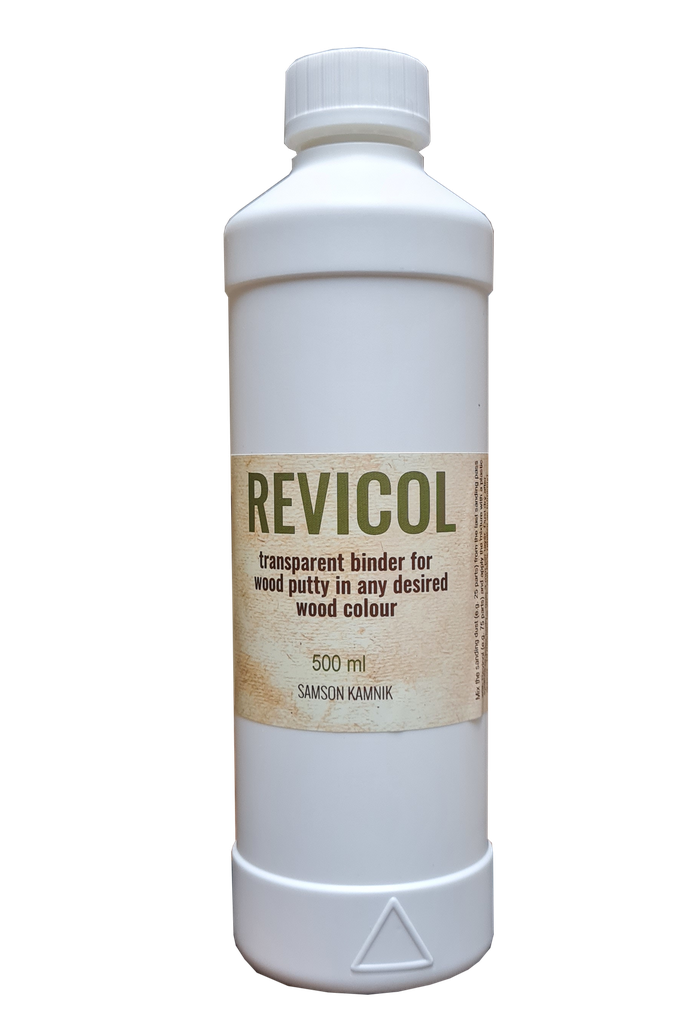Filling cracks in wood with Revicol
Revicol
Filling cracks in wood with Revicol. Easy fast and virtually no colour change. You mix the transparent liquid with sanding dust. The resulting paste is spatuled into the crack. That way you can mimic any type of wood. Apply Revicol in layers of maximum 3 mm. You can therefore fill most cracks in the turning work in one layer. If you want to fill deeper holes and cracks, it needs to be applied in several layers.
Filling cracks in wood
It works simply, you mix sanding dust with Revicol to a paste as thick as toothpaste. Then smear this paste into the hole or crack, pushing the Revicol mixture in well so it can adhere to the wood. After about 10 to 15 minutes (depending on conditions and layer thickness), you can already sand it.
Revicol also works with fine wood shavings, but it gives a more even result if you use sanding dust. The big advantage of Revicol is that it does not affect the finishing coat, such as oil or varnish, and you will not see any colour difference either.
Revicol is widely used by antique restorers and parquet floor layers because repair work is fast and minimally visible. Because woodturners usually need very little, Revicol is now available in a half-litre squeeze bottle. This makes dosing easier and the contents of the bottle do not dry out or get dirty.
Tip
Do not make too much paste at once. The processing time is only a few minutes! Clean the spatula and mixing tray with methylated spirits before it is fully hardened.






